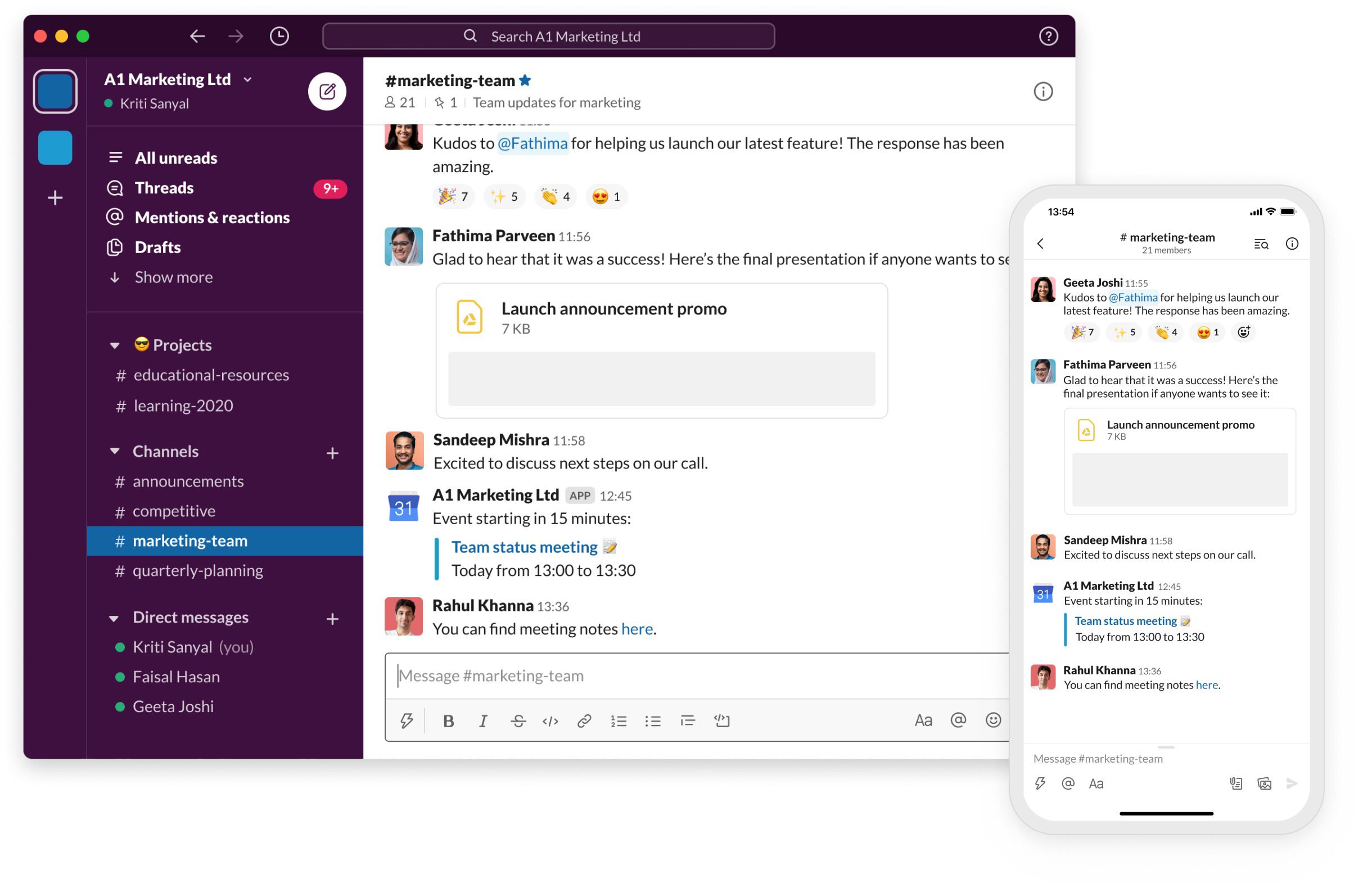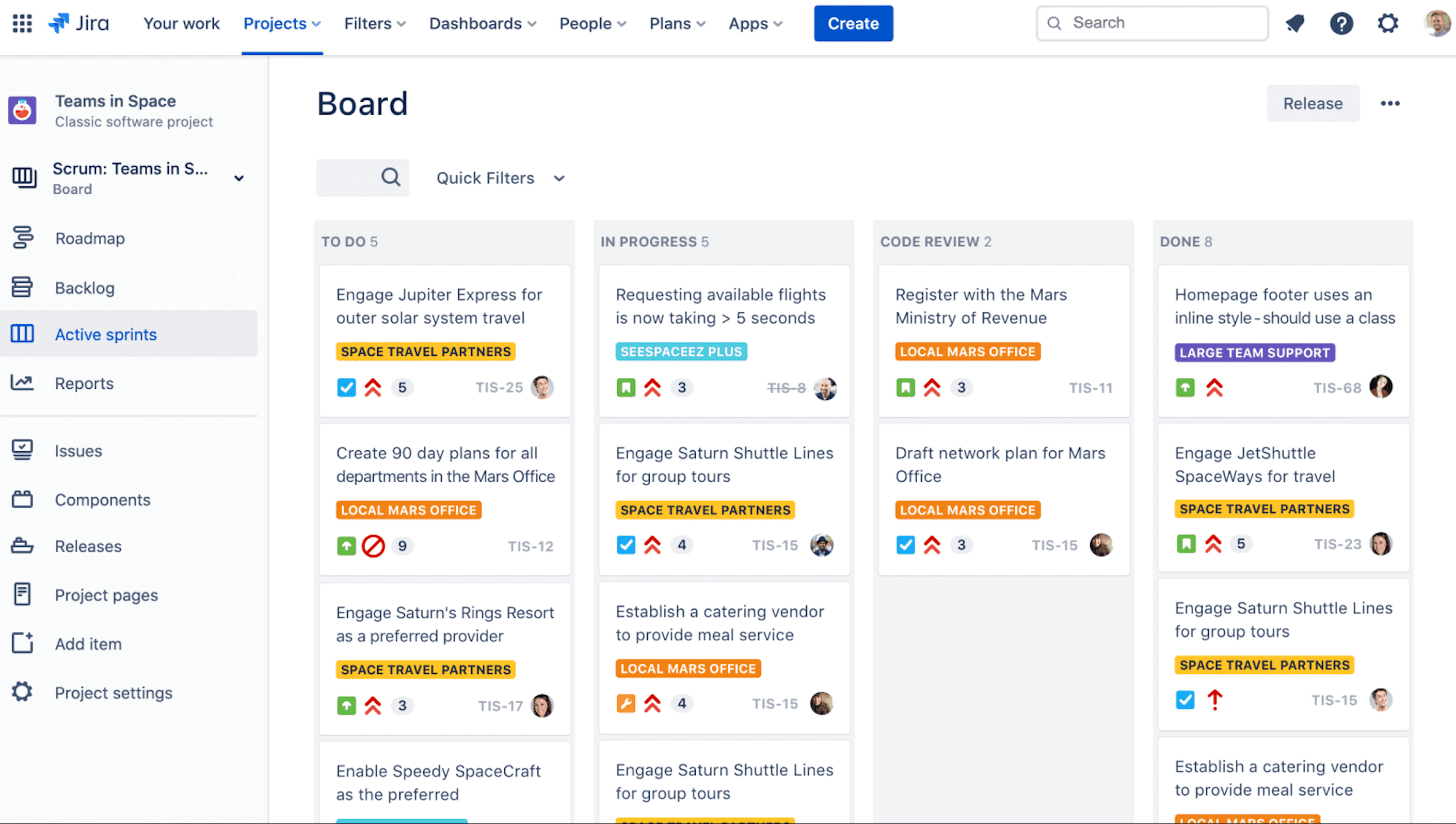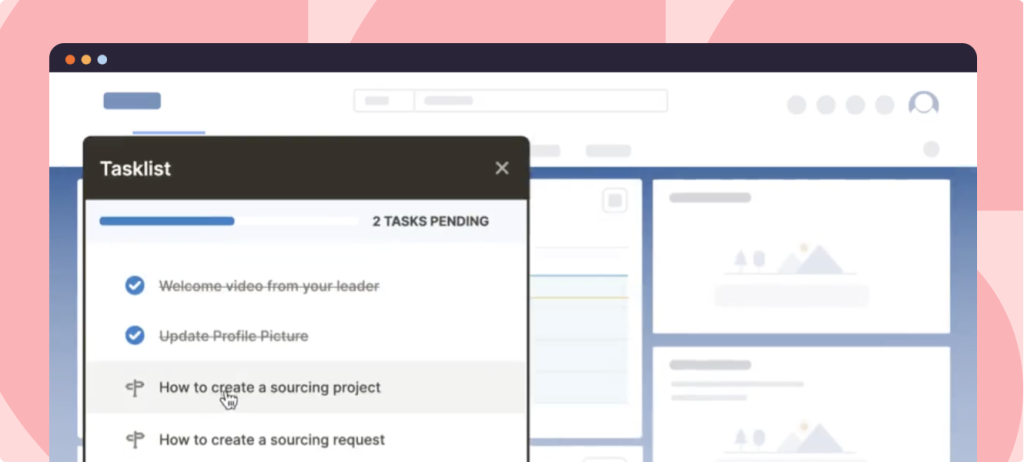Companies that invest in the right digital capabilities are seeing serious returns. We’re talking about 45% higher revenue growth for digitally mature organizations. But here’s the kicker: 70% of digital transformation efforts still miss the mark.
Why? It’s rarely about budget. The real blockers are messy leadership alignment, siloed decision-making, and teams that lack the tools or training to adapt.
Software alone won’t fix those issues. But the right stack of digital transformation tools? That’s where the shift starts. When chosen strategically and rolled out effectively, these tools help automate the repetitive, connect the fragmented, and empower teams to solve real business problems faster.
In this article, we break down the top tools leading that change—and how to make them actually work for your business.
What are the different types of tools to drive digital transformation?
How Technology Supports End-Users Through Digital Transformation
Technology adoption is a major stumbling block for many organizations. When employees struggle to use new tools effectively, productivity suffers and resistance to change increases.
The most successful companies recognize that employees need:
- Contextual, in-app guidance to help them navigate new systems
- On-demand performance support available at the moment of need
- User-friendly interfaces that reduce the learning curve
- Personalized learning paths based on role and skill level
- Continuous feedback loops to improve adoption
Enterprise Software Driving Digital Transformation Projects
Before looking at tools that support successful digital transformation, it’s helpful to understand the systems that organizations want most. Below are some of the most common options in different industries.
- CRMs and sales suites for sales teams to manage customer relationships and sales processes
- ERP systems for finance and supply chain teams to integrate business operations and improve efficiency
- HCM platforms for HR teams to manage the complete employee lifecycle
- ATS solutions for hiring and recruiting teams to optimize candidate acquisition
- Claims management systems for insurance companies to process and track claims
- EHR systems for healthcare companies to digitize patient records and improve care
- QMS platforms for pharma and life science companies to maintain compliance and quality
These enterprise systems form digital transformation initiatives, but success depends on user adoption and implementation.
3 Types of Tools That Help Launch and Accelerate Digital Transformation
The early stages of a digital transformation are critical—they set the tone, pace, and direction for everything that follows. Launching effectively isn’t just about vision; it’s about equipping your team with tools that remove friction, foster better collaboration, and accelerate change from day one.
Below are three essential types of tools your organization should prioritize to streamline project launches, empower your teams, and lay a solid foundation for meaningful digital transformation.
1. Team collaboration and communication tools
Modern collaboration platforms have evolved far beyond basic messaging—they’ve become digital workplaces where real business happens every day.
Whether your organization is remote, hybrid, or entirely office-based, collaboration tools shape how teams connect, share ideas, and drive projects forward. Even fully onsite teams benefit from structured digital collaboration; after all, continuous interruptions hurt productivity, and quick online check-ins or updates often work better.
For fully remote teams, platforms like Slack or Discord are ideal—simple enough to adopt quickly but robust enough to organize complex conversations. Channels, integrations, file sharing, and automated bots streamline workflows, keeping everyone aligned without overwhelming inboxes.
Hybrid workplaces need more nuanced solutions like Microsoft Teams, Miro, or Spike. These platforms seamlessly bridge physical and digital spaces. For example, Miro’s interactive displays offer hybrid teams digital whiteboards for real-time brainstorming sessions, capturing in-person collaboration, and keeping remote participants fully involved.
2. Project management software
The right project management software can make or break a digital transformation project. But matching your platform choice to your existing tools, workflows, and team dynamics is essential.
If you’re looking to streamline operations across departments, like sales, marketing, and customer success, tools like monday.com provide integrated capabilities. Monday.com offers project management functions combined with CRM features, enabling sales teams to track leads and collaborate with marketing, all from one platform.
Simpler tools like Trello or Asana are great when your primary goal is clarity and straightforward task management. These tools keep teams organized with intuitive Kanban boards and task lists, ideal for non-technical or cross-functional teams managing multiple projects simultaneously.
For technology teams or software development projects, you’ll likely need a more specialized tool. Jira remains the gold standard here, specifically designed for tech projects, with powerful tracking, agile workflows, and detailed reporting to help teams deliver complex projects reliably and transparently.
3. Sandbox training platforms
New software adoption often fails when employees feel uncertain or overwhelmed. Sandbox environments provide a practical solution by offering safe, risk-free spaces for your teams to learn, experiment, and build real-world skills without the pressure of making costly mistakes.
Tools like Whatfix Mirror enable organizations to replicate their actual software environments for hands-on user training. Instead of relying solely on traditional manuals or classroom-style training, which rarely translate effectively into day-to-day tasks, teams get to practice workflows in an interactive environment identical to their real production systems.
This approach accelerates adoption, boosts confidence, and significantly reduces errors when employees transition to the live software. By providing realistic, hands-on experiences, sandbox training platforms dramatically improve the success rates of digital transformation initiatives.
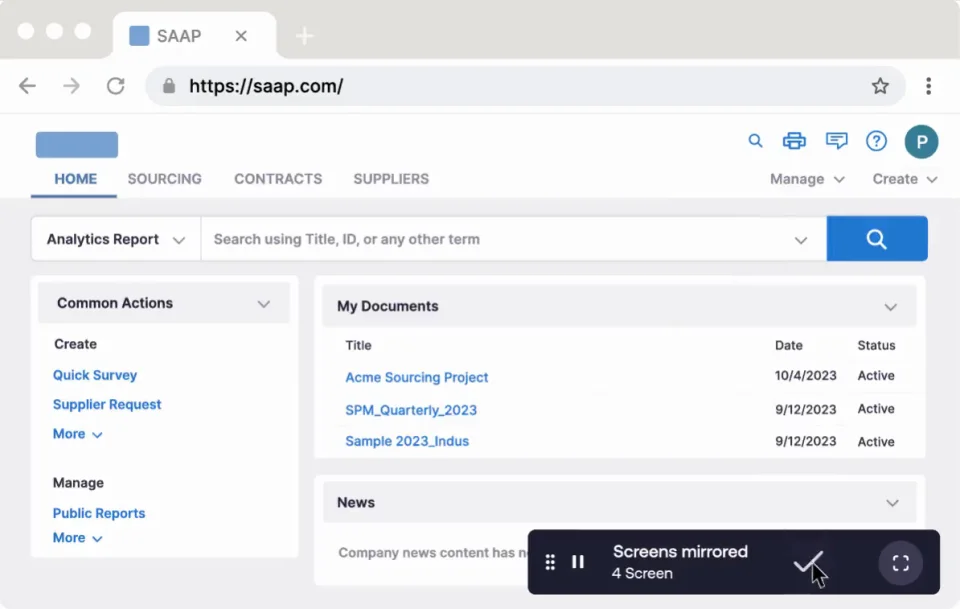
4 Types of Tools That Maximize Post-Launch Transformation ROI
Successfully launching a digital transformation initiative is only half the battle. To truly capture value and sustain momentum post-launch, you’ll need tools designed specifically to boost user adoption, monitor progress, optimize software investments, and keep your teams aligned.
The following four categories of tools help ensure your transformation sticks, drives long-term ROI, and implements lasting change into your organization’s DNA.
1. Digital adoption platforms (DAPs)
Digital adoption sits at the heart of many digital transformation challenges. Consider this: roughly one-third of CRM implementations fail—not because of the software, but because employees aren’t adequately prepared or supported to use it. Without a clear strategy for adoption, you’ll run into similar hurdles with almost every new software tool you introduce.
This is where digital adoption platforms (DAPs) like Whatfix make an impact. A DAP integrates seamlessly into your current tech stack, allowing your teams to deliver contextual, interactive guidance right within your existing applications. Think of personalized walkthroughs, tooltips, step-by-step tutorials, and onboarding checklists that make new software intuitive from day one.
Whatfix also gives you deep visibility into how your employees engage with software, highlighting specific features users struggle with and providing clear analytics on help content effectiveness. If you’re serious about driving successful adoption—and ultimately ROI—a DAP is a must-have.

2. Product analytics
To maximize ROI from digital transformation, you need more than guesses and gut feelings—you need concrete data. That’s where product analytics come in, transforming user behavior into actionable insights.
Platforms like Whatfix Product Analytics and Amplitude uncover exactly how your employees use (or don’t use) software tools, helping you pinpoint roadblocks and target improvements. Whatfix’s no-code tracking, for instance, lets you monitor user interactions throughout your applications and digital processes, identifying precisely where drop-offs happen.
This visibility allows your teams to proactively address issues, whether through targeted training, interface adjustments, or strategic software improvements. In other words, analytics empower you to optimize your transformation efforts, ensuring higher adoption rates and better overall outcomes.
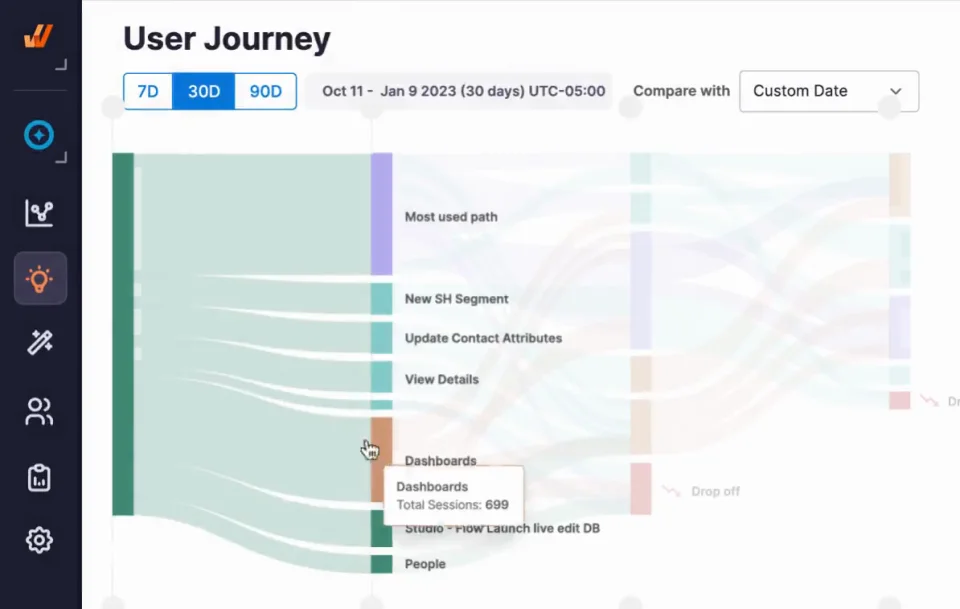
3. Intranet tools
Despite their reputation as relics from another era, intranet software portals remain powerful tools, especially for businesses juggling complex technology ecosystems. Modern intranet platforms, like LumApps, Workplace by Meta, and Honey, consolidate scattered business tools into a single, intuitive hub, making daily work easier and employee engagement stronger.
Imagine a personalized internal social network, seamlessly integrated with tools like Slack or Microsoft Teams, where employees can access everything—from HR updates and leadership communications to company-wide news and social interactions.
LumApps, for example, lets organizations build robust internal communities by offering dedicated Newscenters, leadership communication channels, HR resource portals, surveys, and more, creating a cohesive employee experience that genuinely fosters connection and collaboration.
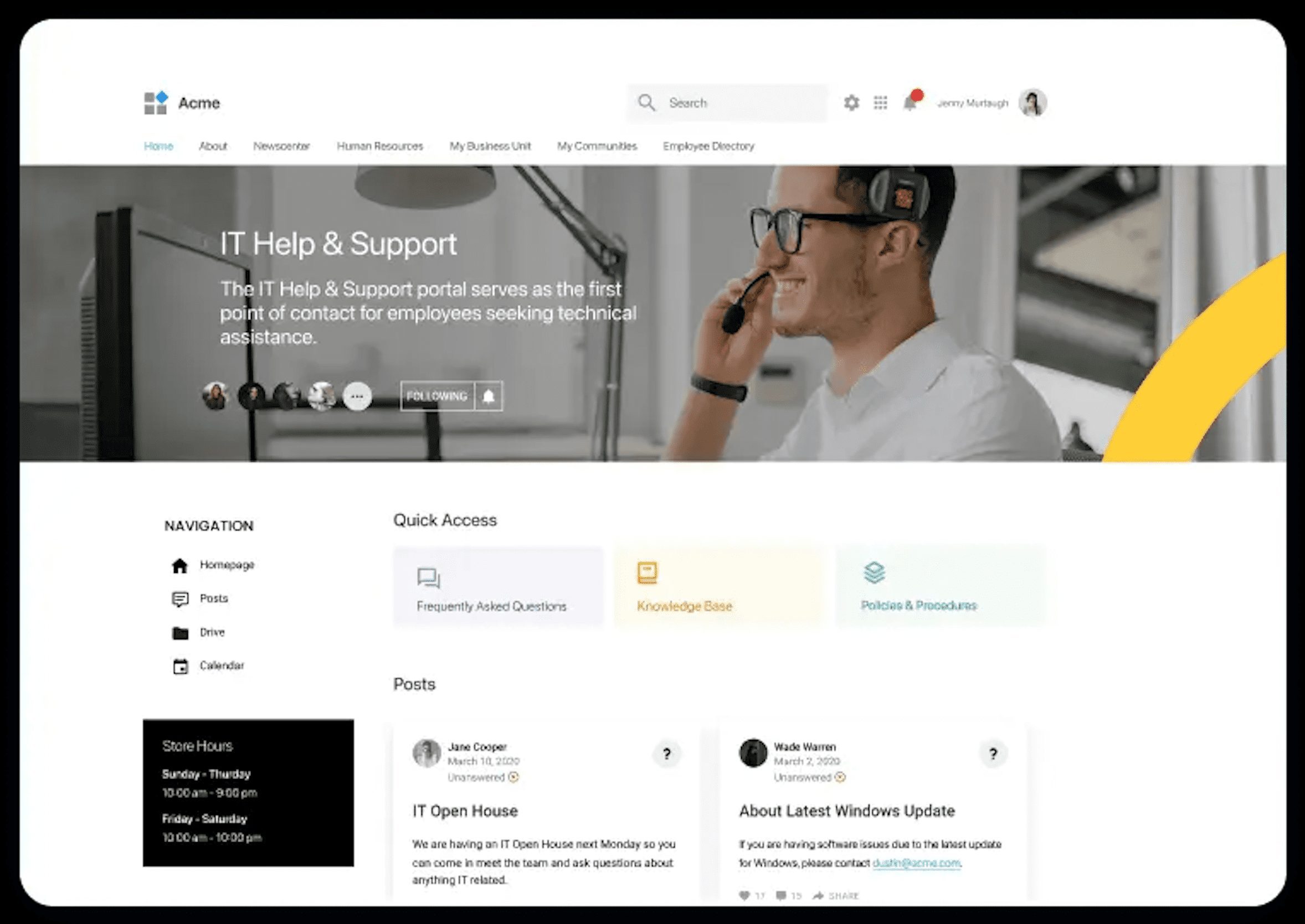
4. SaaS management platforms
SaaS sprawl is one of the hidden costs of digital transformation. Shockingly, enterprises waste an average of $18 million on unused applications annually—a problem that grows alongside your technology stack.
SaaS management platforms like Zylo and BetterCloud provide the visibility and control you need to get your tech spending under control. Zylo automatically tracks and categorizes your SaaS usage, helping you make smarter budgeting decisions and eliminate redundant subscriptions.
BetterCloud takes this further, empowering IT teams to create custom workflows around user management, security protocols, and license provisioning. This cuts costs and significantly reduces security risks associated with shadow IT.
Innovations like Breakroom have taken SaaS management to another level entirely, offering immersive virtual workplaces within the Metaverse. Breakroom creates fully customizable 3D spaces, providing an engaging and collaborative environment far beyond traditional 2D tools.
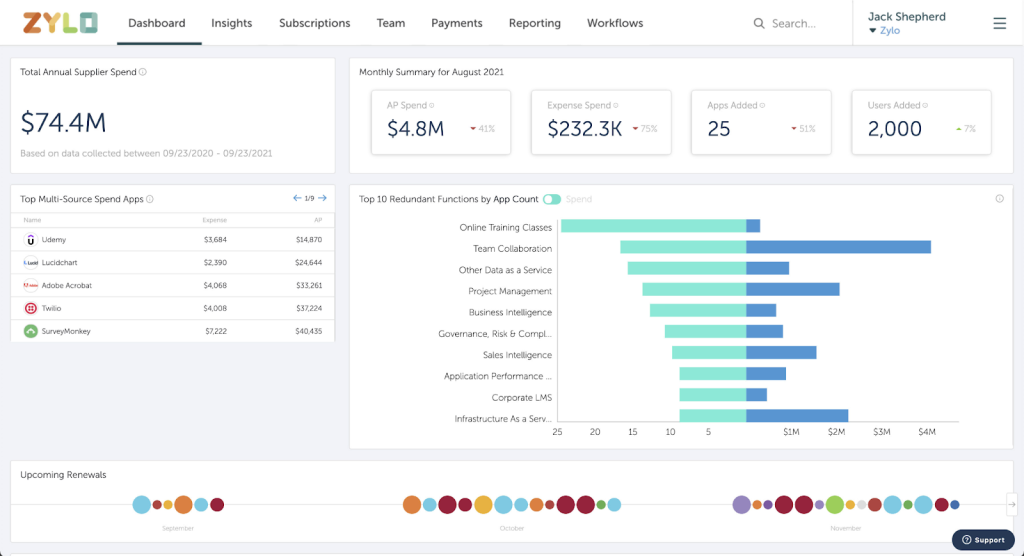
Digital Transformation Clicks Better With Whatfix
Digital transformation isn’t just about technology—it’s about empowering people. The most sophisticated software means little if employees aren’t equipped or confident enough to use it effectively. From initial rollout to sustained adoption, success depends heavily on choosing tools designed to support your teams every step of the way.
Whatfix helps organizations bridge the gap between complex software and real-world user adoption. By providing practical, intuitive solutions, Whatfix directly addresses common barriers to digital transformation, such as poor adoption rates, training gaps, and a lack of actionable insights.
Here’s how Whatfix powers digital transformation success:
- Whatfix Mirror: A risk-free sandbox environment that offers hands-on, realistic training scenarios. Employees build confidence and proficiency without worrying about making costly errors in live systems.
- Whatfix Product Analytics: Actionable insights into how employees actually use your software. With clear visibility into user behavior, you can proactively address friction points, drive higher engagement, and ensure your transformation delivers tangible ROI.
- Whatfix DAP: In-app, contextual guidance that makes even the most complex tools accessible. This dramatically reduces training time, boosts user confidence, and accelerates the adoption of essential software features.
Whatfix doesn’t just support your digital transformation—it enables your team to confidently embrace it. When your people thrive, so does your ROI.
Ready to make digital transformation click? Request a demo today to see Whatfix in action.
